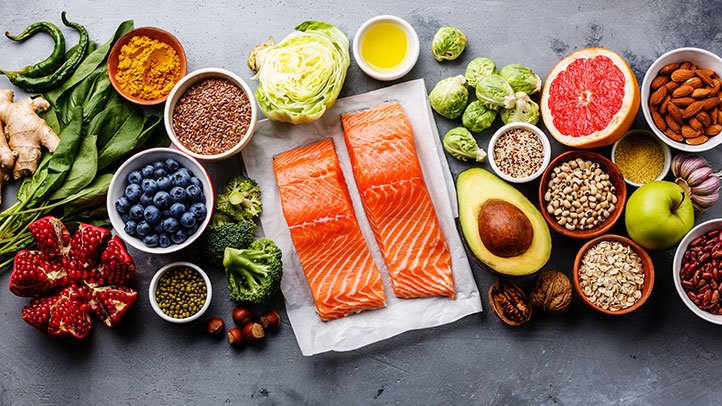What is a Mediterranean diet exactly?
The Mediterranean diet refers to the common dietary habits among countries along the Mediterranean sea. Depending on what country you live in, whether it’s Greece, Spain, Morocco, Italy or Turkey, cooking styles may vary.
Also, the Mediterranean diet adheres to the historical and traditional ways that people in these regions prepare food. In these modern days, with the importation of fast-food chains, food consumption of the people who live in these areas are no longer limited to their environment.

Basics of the Mediterranean diet
Unlike the typical American diet that is packed with processed food and the one that high in saturated fats, the Mediterranean diet is a concept of healthy living. It is a guidance for a lifestyle that does not take the joys out of food enjoyment and comes with plenty of yummy and healthy recipes for one to enjoy.
At the end of this article, I will provide a few cooking recipes for you to try out. Some of them are not time-consuming and take less than 30 mins to prepare.
Not a short-term fad diet
It will likely take more than a week or two to see the impact of this diet. The reason is, it does not require you to put your body through strenuous regiments and strict exercises, or eliminate major nutrients from your food. The diet, rather, guides you through some principles to achieve long-term weight loss, healthy living, and meal celebration with friends and family.
It is a lifestyle change that makes it possible for one to stick with for the rest of your life ideally, and reap its benefits along the way.
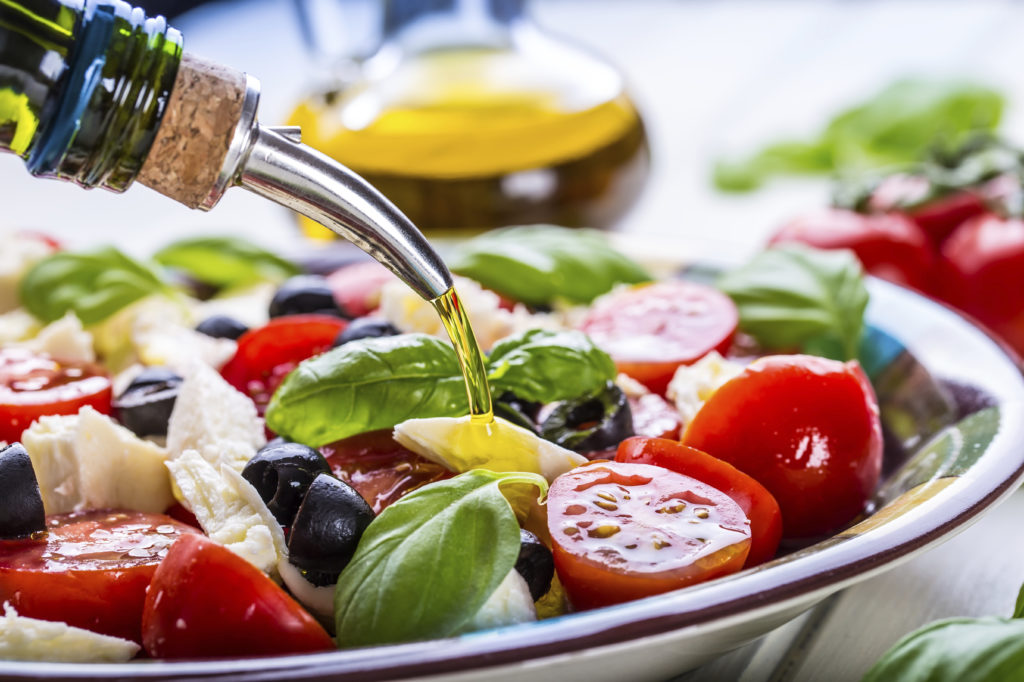
A holistic way of living
The Mediterranean diet has gained its popularity over time mostly because it’s a sensible way of eating. It is very different from the other low carbs, high fat or low-fat diets. I don’t even want to call it a diet, but more a lifestyle that encourages people to stay fit and social daily.
While going with a Mediterranean way of living, you are still allowed to have various sources for nutrients, including carbohydrates, fats, and proteins, contributing to a well-rounded plan of life.
More freedom in food choices
Mediterranean food is packed with fresh fruits and vegetables, whole grains, beans, nuts. seeds and spices.
The main source of fat in Mediterranean food is olive oil, a monounsaturated fat. Poultry and dairy products such as milk and cheese are consumed moderately. Fish and seafood are eaten regularly, while red meat is limited to only once or twice a month.
Mediterranean food is never too restrictive. The key to this diet is to consume each group in moderation, with a favor leaning toward consuming plant-based food.
Exercise and being active are also part of the plan, as, with Mediterranean people, an active lifestyle is an integral part of social and healthy life.
The Mediterranean diet is a holistic approach to managing your lifestyle. It consists of five components: food, exercise, social or family life, and being mindful of what’s going on in your body and mind.
How to eat like the Mediterranean
“Kalí óreksi”, that’s “Bon appetite” in Greece. Mediterranean food is super tasty, in my opinion. Think berry fruit yogurt parfait and banana chocolate smoothie, sweet and spicy chicken salad sandwich, baked zucchini and potatoes or Greek chicken kebabs.
On a busy workday, you have the option of making Mediterranean stews in a slow cooker, so the veggies or meat you put in the cooker in the morning will be ready at the dinner table.
Food and Nutrition
With Mediterranean food, you are encouraged to eat a variety of nutrients in the color of a rainbow. Moreover, the groups of food in a Mediterranean diet can also be arranged in a food pyramid. The food pyramid was created 25 years ago by Oldways, a non-profit nutrition education organization.
The visual below recommends the groups of food and their relative portions and consumption frequency in the Mediterranean diet:
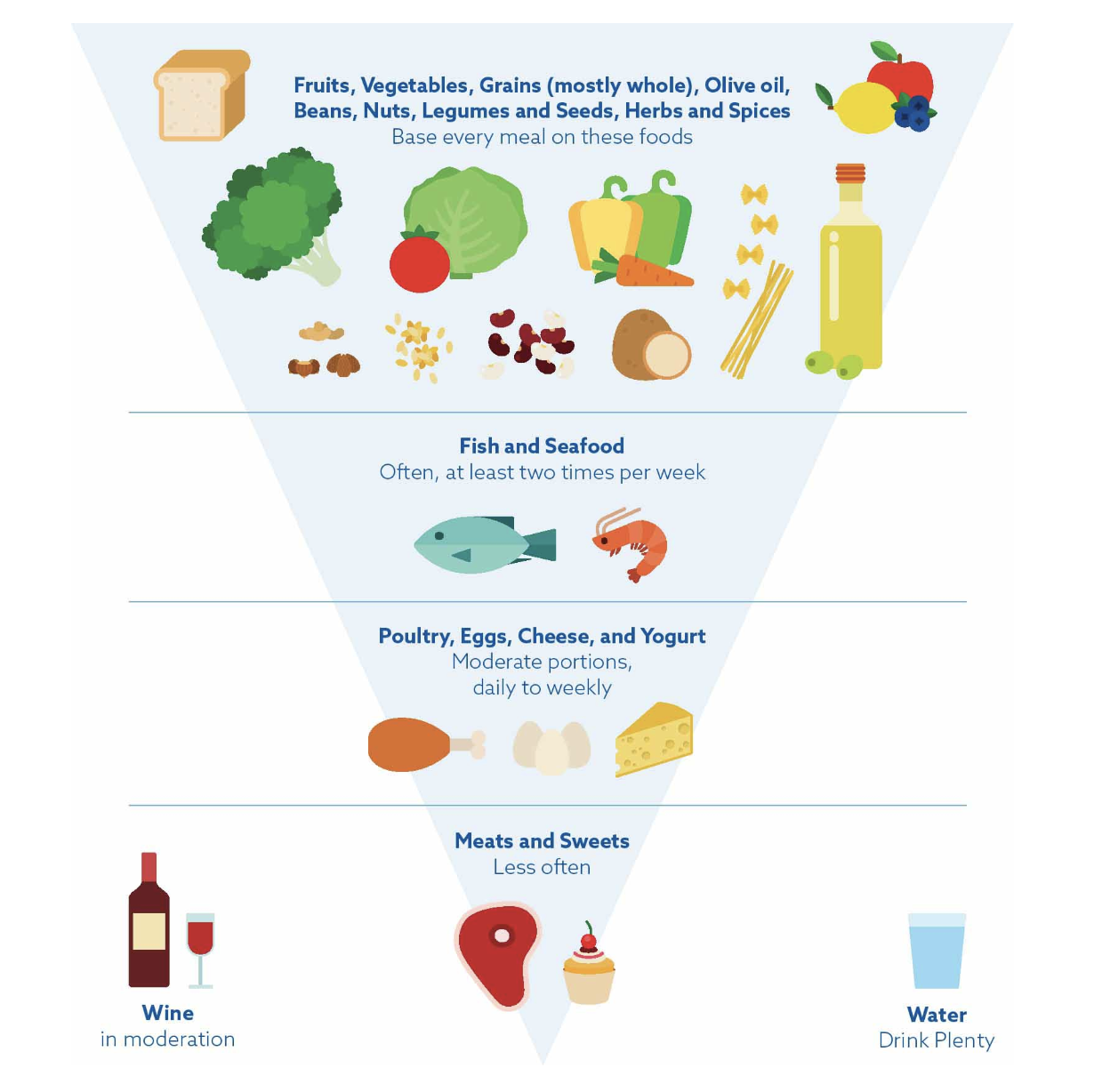
Components of a Mediterranean diet:
- Fruits and vegetables:
It’s important to have them in every meal. Plant foods also make up the biggest portion of a meal. It’s beneficial to do so because they provide fiber, vitamins, and minerals that are crucial for your digestion, healthy-looking skin, and to fight off diseases.
- Nuts, seeds, beans, and lentils:
This is the second majority group in a meal. Eat them daily. Nuts and beans provide plant-based proteins and are also the source of mono and polyunsaturated fats (the good fats). Many nuts and seeds such as almonds or sunflowers are rich in Omega-3 fatty acids, the healthy fats that help you lose weight.
- Whole grains and whole-grain pasta:
Whole grains also make up a great portion of a meal. They are the complex carbohydrate that breaks down slowly in your system, preventing insulin and blood sugar from surging up in your body too quickly. Grains provide good carbs for people with type 2 diabetes because they help control the level of sugar in the blood.
- Olives and Olive oil:
Replace your butter gradually with olive oil because olive and olive oil are the main sources of healthy fat.
- Lots of herbs and spices:
Use them freely. They create great seasoning, so you no longer need salt as a flavor enhancer for your food.
- Fish and seafood:
Look for the oily ones such as salmon, sardines or tuna. Eating seafood two or three times per week reduces the risk of death related to health, according to the Journal of American Medical Association in 2006. It’s also linked to improved memory in older adults and helps develop a healthy brain and eyes in children.
- Cheese and plain yogurt:
Eat moderately. Cheese and yogurt contain calcium and potassium that are good for bone health. Think Greek yogurt that’s full of protein and probiotics that help greatly with digestion.
- Chicken and poultry:
You should consume chicken and poultry moderately in smaller portions compared to that of veggies and grains.
- Red meat:
The guideline for red meat is to have it limitedly (once or twice a month) because it contains a lot of highly saturated fat.
- Water:
Drink plenty of water because it can help lower blood pressure, lower the risk of a stroke, lower cholesterol and more!
- Red wine:
It can be optional. Red wine is an integral part of a Mediterranean diet but it should be consumed moderately. According to the Dietary Guidelines for Americans, moderate drinking is defined as two 5-ounce glasses for men and one glass for women.
Celebrating special occasions with a glass of red wine is a great way of enjoying life.
How to live like the Mediterranean
Mediterranean people have a social culture that keeps them active. Walking or biking to the market or to visit each other is more popular than taking a car ride. The moderately pleasant climate makes it easier for the people in these regions to do so, but they also possess a trait for nature-loving that shines in their produce-rich cuisine and diet.

Exercise:-
Exercise and being active are the major components of the Mediterranean diet. To follow this diet, you will begin to do one physical activity 4-6 times a week. Think of the daily activities as a way to avoid aches and pains and they are also an amazing way to release stress.
Whether you do yoga, walking, biking, cardio, weight lifting or planting in the garden, it’s important to create an exercise routine that keeps you active every day.
Click here to read:- 50 Exercises To Lose Weight And Get Back In Shape
Resting and relaxing
Resting and relaxing at the end of the day is crucial as well, so your system can rejuvenate itself. A nightly routine that ends with stretching or meditation and a warm bath can help release all the pressure, both physically and mentally.
Your body needs to get a break from the pressures on its joints, muscles, and the brain. Wind down your activities at the end of the day to get a peaceful sleep and revived energy for the next day.
Click here to read:- 6 Proven Tips To Sleep Better At Night
Social life
Staying connected with friends and family through gatherings and conversations, big or small, can give one a true sense of self-value and help others release stress in daily life or get through tough times. Taking life slowly is one thing you can notice in the lives of the people living along the Mediterranean sea.
Think of ‘siesta’, a nap in the middle of the day, a way for Mediterranean people use to recharge their energy. ‘Tapas’, or late afternoon – late-night snacks, are a common reason for people in Spain to get together for happy hours and enjoy time after work at the end of the day.
It’s advisable to maintain a social routine where you can enjoy food and conversations with each other. If you don’t want to go out, at dinner, get the family involved in preparing meals as it can also be a great way of making cooking fun and to treasure the living moments together.
Click here to read:- 6 Ways Social Media Affects Our Mental Health
Mindfulness
Mindfulness is something that you can practice to achieve. It’s an essential part of the day, as it is equally important to train your mind as it is to train your body. If your mind is fit and healthy, you will have better control of your thoughts, your feelings.
Ultimately you gain the ability to stop your worries, stress or fear when you have them. A good mind is a crucial part of living a happy healthy life!
2 steps toward mindfulness:
Being mindful is about knowing what’s going on inside oneself. By looking inward, you are able to identify the thoughts and feelings that are happening within you at the moment.
Spend a few minutes of your day to practice these 2 steps of mindfulness:
- Breathing
For any moments throughout the day, stop thinking for a couple of minutes and do 3-5 deep breaths. This usually helps slow down your thoughts and keep you in check of your emotions, feelings, and any sensations in your body.
- Being still:
After taking a few deep breaths, see if you can actually stop all the thoughts that are going on in your mind totally for one second. Have a blank mind and hold that “still” moment for a few more seconds if you can.
By practicing these two steps a few times throughout the day, you will gain better control of what’s going on in your mind and raise self-awareness. Deep breaths pump more oxygen into your body, calm down the nervous system and improve your ability to think clearly.
Mediterranean Diet and Weight Loss

Among all the incredible benefits that the Mediterranean offers, weight loss is among those. Many studies around the world have tested the effectiveness of the Mediterranean diet. A recent Harvard study showed that the Mediterranean diet is superior to weight-loss diets, including the low fat, low carbs diet, even than other diets created by major health organizations.
With the Mediterranean diet, because you can get the satiation from your favorite food, you are more likely to stick to the diet long term. Therefore you are more likely to lose weight and keep the desired weight for the rest of your life because the diet is more of a lifestyle change than a restrictive diet.
The abundance of fresh foods translates to a vast amount of nutrients that benefit your body. Most fat intake is from olive oil, nuts, and fish that are rich in Omega3 fatty acids. Spices are used generously, so salt is not needed for seasoning. On top of these, with exercises and a change in the portions in different groups of food, the pounds will shed off.
Other benefits
Besides the weight loss benefits, there are many other benefits tied to the Mediterranean diet, including a reduced risk in:
- Heart health
- Type 2 diabetes
- Cancers
- Alzheimer’s diseases
- Cognitive health
- Parkinson’s diseases
- Relaxation and mood enhancement
- Pain relief
- Kidney function
— Mediterranean Cooking Recipes —
While cooking Mediterranean food, you can follow the guideline for the meal portion as below:
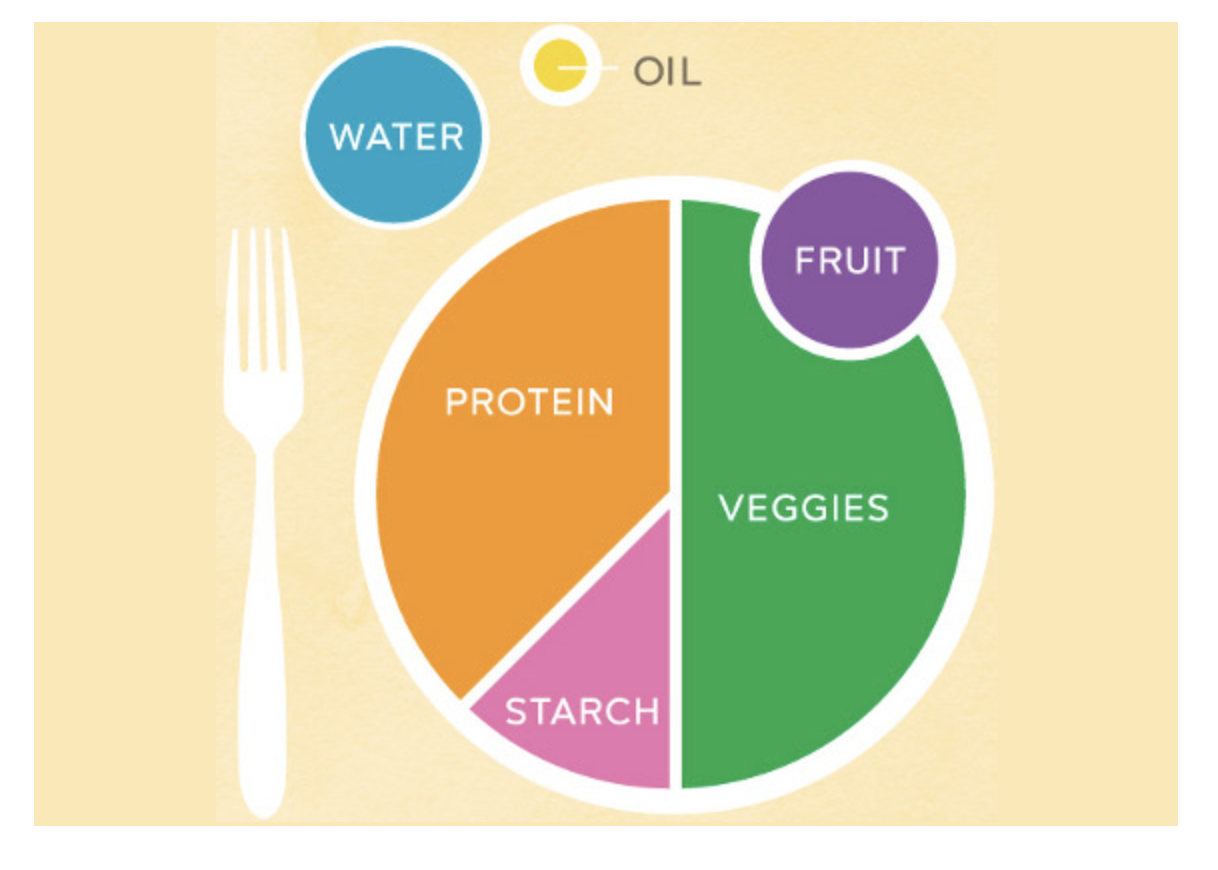
Here are 3 food recipes that you can prepare in less than 30 minutes. Try making Mediterranean food for breakfast, lunch or dinner one day this week, and keep an eye out for more recipes coming!
Breakfast: Banana and Chocolate Vegetarian Smoothie –
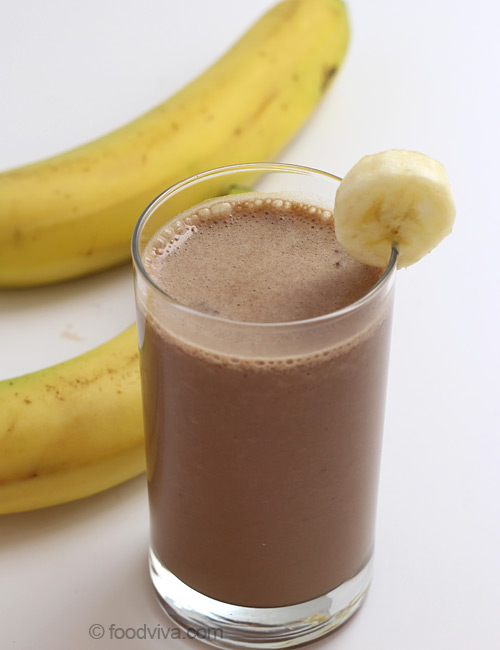
Servings: 2
Time: 5 minutes
Calories Per Serving: 220
Carbohydrate: 57g
Protein: 2g
Fats: 2g
Ingredients:
- Honey: 3 tsp’s
- Cocoa powder (unsweetened): 3 tsp’s
- Almond milk (unsweetened): 1 cup
- Bananas: 2
- Ice: 1 cup
How to prepare:
- Toss all the ingredients in a blender and set it in high for 30 seconds or until smooth
- Keep the leftover in the fridge and blend it again the next time you have it to assure it’s smooth. Or you can try reduce the ingredients by half for 1 serving.
Lunch: Cucumber Sandwich –
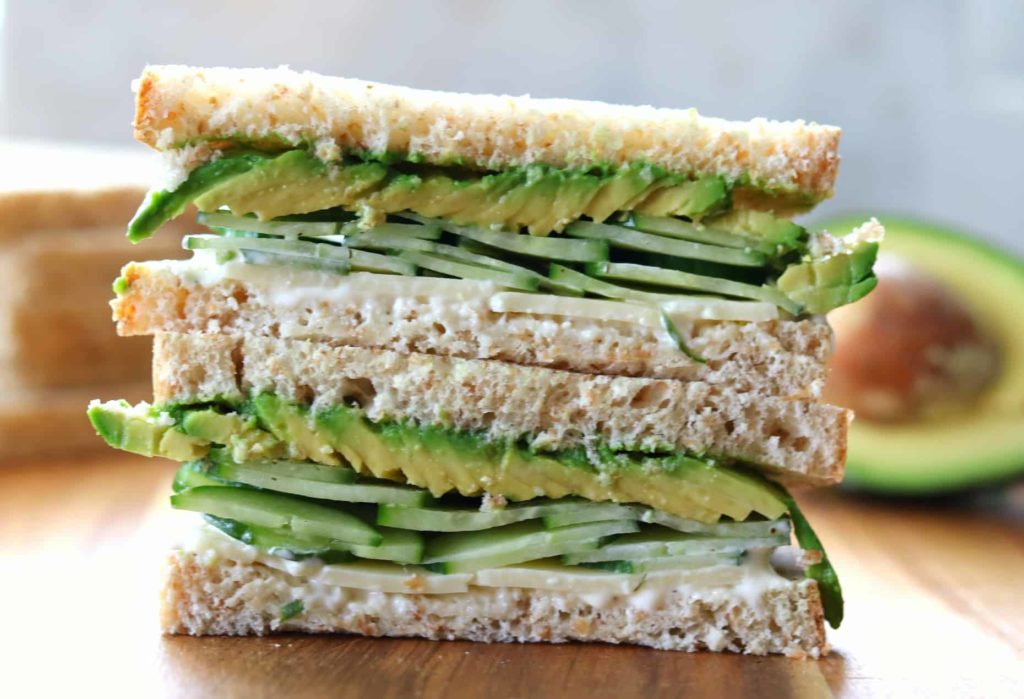
Servings: 1
Time: 10 minutes
Calories Per Serving: 500
Carbohydrate: 47g
Protein: 12g
Fats: 33g
Ingredients:
- Avocado: Half
- Lettuce: 1 leaf
- Tomato: 1
- Alfafar sprouts: 2 Tsp’s
- Cucumber: 6 slices
- Cream cheese: 2 Tsp’s
- Pepperoncini: 1 oz
- Red wine vinegar: 1 tsp
- Olive oil: 1 tsp
- Whole wheat bread: 2 slices
How to prepare:
- First, spread the 2 tablespoons of cream cheese on each slice of the bread.
- After this is done, you want to layer the cucumber and Alfafar sprouts on top of each other.
- For flavor, sprinkle the olive oil and red wine vinegar on top of the cucumber and sprouts
- Next, layer the lettuce, tomato, and pepperoncini on top
- Lastly, place the slices of avocado on the other slice of the bread and your sandwich is ready to be served
Dinner: Greek Chicken with Pasta –
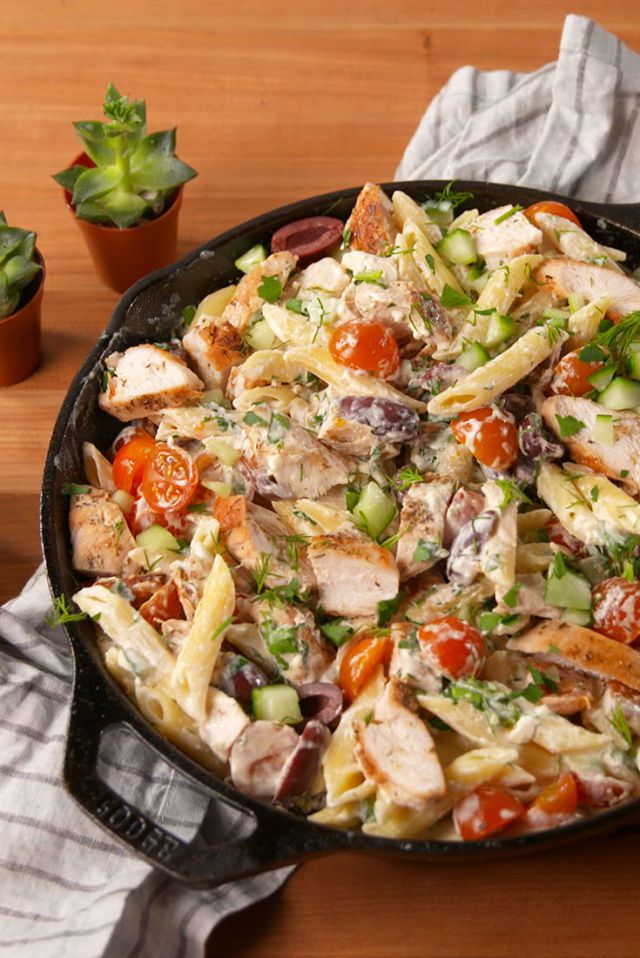
Servings: 6
Time: 30 minutes
Calories Per Serving: 600
Carbohydrate: 70g
Protein: 33g
Fats: 12g
Ingredients:
- Lemon: 2
- Tomato: 1
- Artichoke hearts: 2 cans
- Garlic: 2 cloves
- Red Onion: Half
- Pepper: 1/4 tsp
- Salt: 1/4 tsp
- Dried oregano: 2 tsp’s
- Fresh parsley: 2 Tsp’s
- Lemon juice: 2 Tsp’s
- Olive oil: 1 Tsp
- Fetta cheese: 1/2 Cup
- Linguine pasta: 1 package
- Chicken breasts (boneless and skinless): 1 Lb
How to prepare:
- To begin, boil the linguine pasta in water for 8 – 10 minutes, or until cooked thoroughly. You can also switch out the linguine pasta for your favorite kind. Aim at whole wheat, whole grain pasta for added health benefits.
- While waiting for the pasta to be cooked, you can season the chicken breasts on both sides with salt, pepper, and oregano.
- Next, you want to put a large skillet over medium or high heat. Once the skillet is warm, pour in the olive oil and wait until it sizzle. Once the oil starts sizzling, add in onion and garlic. Cook for a couple of minutes until they become fragrant.
- When the onions are tender, add in the seasoned chicken breasts. You can cover the pan and let the chicken simmer until they are thoroughly cooked.
- Once the chicken is cooked, you can lower the heat to medium-low. Then add in cooked pasta, lemon juice, artichokes hearts, tomato, and feta cheese.
- Make sure to stir the pan until everything is evenly combined
- Add parsley as a garnish and serve the meal warm.
Above are some zesty and easy ways to prepare meals that hopefully will give a taste of what Mediterranean food is about. Share if you like them. And enjoy a happy and healthy meal!

